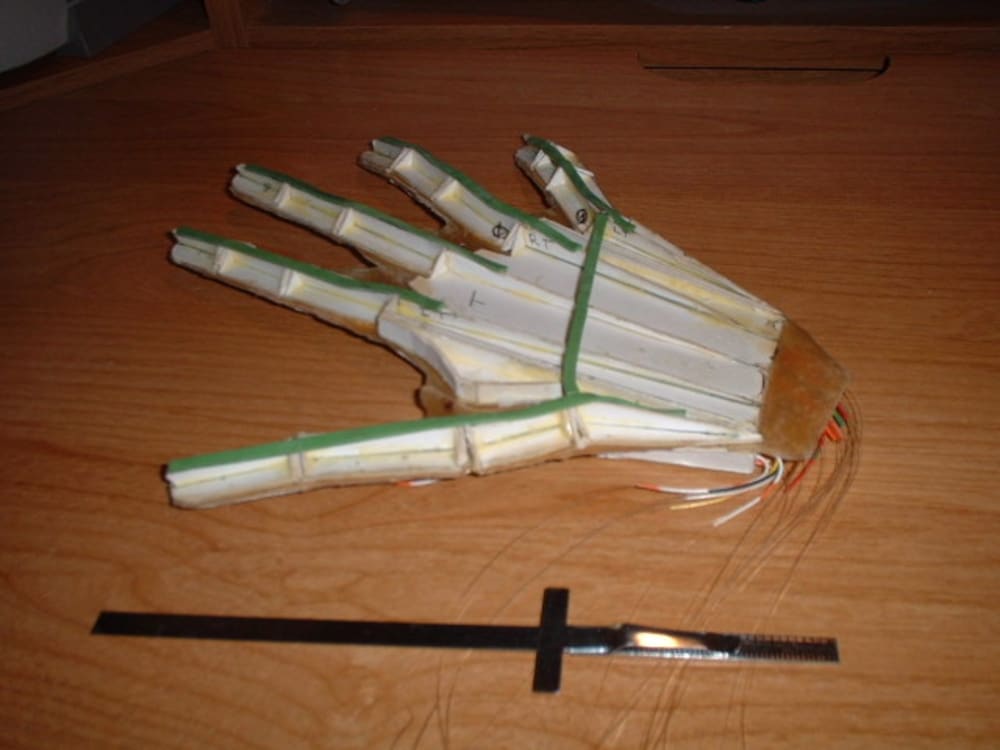This is an inexpensive, lightweight, completely dexterous Prosthetic Hand / Robotic end effector. Originally designed to use high density card board for the skeletal support material. Card board was selected to support NASA's finding that it held up best to micro meters. However the design is ideal for 3D printing.
The hand uses a flexible center to allow the movements imparted by 25 pull cables in flexible tubes powered by piezoelectric pump powered hydraulic cylinders. The piezoelectrics greatly reduce the power consumption while providing very good strength.
The hand voids are filled with 2 layers of rubber foam and a vulcanized latex cover to emulate the feel of a human hand. The cover also serves as the return springs.
The scale of the hand is from a 3 year old's to as large as required.
All applications can utilize a subminiture flexible linear encoder to provide accurate position feedback and pressure sensors to supply hap tic feedback when required.
Like this entry?
-
About the Entrant
- Name:Randolph Garrison
- Type of entry:individual
- Software used for this entry:Intelicad
- Patent status:none








